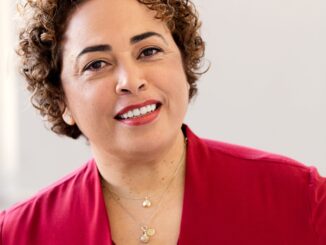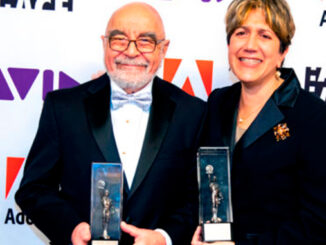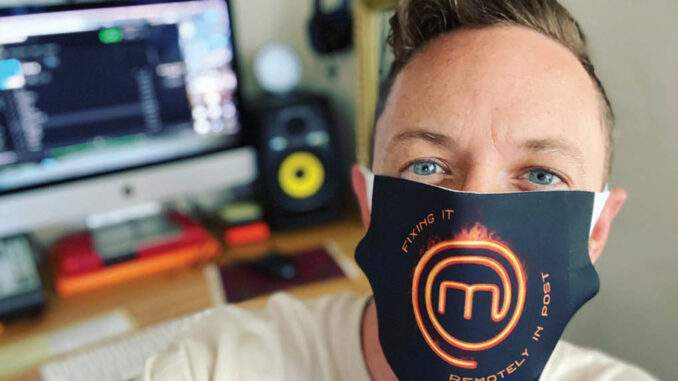
By Su Fang Tham
Last March, film and TV productions worldwide came to a jarring halt with the onslaught of COVID-19.
As we all grappled with the new realities of production shutdowns, furloughs/layoffs and the sweeping economic collapse, a steadfast group of post-production professionals quietly kept what’s left of our industry chugging along by bringing projects that were already “in the can” to the finish line. Thanks to them, streaming platforms have largely been able to keep up with an insatiable demand for new content in home entertainment as large swaths of the country hunker down at home. In the first days of the pandemic, studios frantically dropped off Avids, hard drives, speakers, and monitors at editors’ homes to keep them working.
But for working parents with school-age children in tow, adjusting to working at home every single day has brought on many pain points. As Austin Scott, a “Dancing With The Stars” editor and single dad of two, can attest: “After getting the kids set up for their Zoom classes at 8 a.m., I get five Slack notifications about an urgent note needing to be addressed,” he said. “As I go to type ‘this note has already been addressed, check the Google doc,’ my daughter Reese has been dropped from her virtual session.” He tries to stay calm as he notices the culprit-she’s discovered a new video on YouTube.
Drew Forni, an Emmy nominee for “RuPaul’s Drag Race,” is fortunate to have daycare on most days for his two-and-a-half-year-old twin boys. Even so, recalibrating work/life balance since the pandemic has not been a breeze.
“The boys catch a glimpse of the edit bay monitors and NEED to press ALL THE KEYS and make a ton of crazy edits or delete my sequence,” he joked, adding that nothing has really disappeared-yet. On days when they can’t arrange for day care, it’s insanity. “My wife has been making masks since March and our entire living/dining room has turned into a mask production hub. I’m downstairs in the edit bay. If we don’t have day care, the masks are paused, orders get backed up, and edits take longer.”
Working parents in post-production already faced many challenges before the pandemic decimated the old ways of doing business. “The unpredictability of our work is really hard on family,” veteran editor Amy E. Duddleston, ACE (“Vida” and “Hunters”), said. “You often don’t know if that ‘easy’ sounding one-hour drama is going to turn into a nightmare where you’re working 80 hours a week.”
“Ted Lasso” editor Melissa McCoy, who shares two kids with husband and editor Ray McCoy, shares the sentiment: “The unpredictable hours makes child care really tricky. Sometimes we don’t know until the last second if producers or directors want us to work late,” she said.
Working from home the past year has presented an unintended consequence: Many are realizing that working in the office no longer has to be the only way. As Scott put it: “What is it about working in an office that’s truly necessary? By now, we have largely proven that anyone who wants to (and can successfully) work from home should be allowed to do so.” Bronwyn Shields, visual effects editor for HBO’s eight-part crime drama “The Night of,” concurred: “I hope productions will become more flexible and allow us to work from home or come into the office, based upon the needs of the day. There are so many tools to bridge a home office to an onsite office now.”
“Empire” editor (and host of the Optimize Yourself podcast series) Zack Arnold believes the days of micromanaging editors might be over. “If there is one silver lining from this pandemic, it’s having a much clearer understanding that we get paid for the value we bring to a project, not the hours we work,” Arnold said. “Trust that we can manage our time and deliver.” It can still be hard to find the motivation to work from home though, especially when it’s now so easy to stay in bed. That’s why it’s so important to ensure that your home office is conducive to work, even when you’re surrounded by distractions. Some people may decide to build a wooden garden house or renovate their office room to create a separate space from the rest of the family. While others could also find it useful to surround themselves with calming houseplants or with motivational quotes turned into neon signs from a site like www.neonfilter.com. Anything that can create calm in your mind will help.
Amidst the chaos, folks are thankful when the union has been able to step in and fight for better terms, but they also recognize that there is more to do. Angel Gamboa Bryant, an editor for NBC’s “Last Comic Standing,” advocates for the eight-hour workday. “Ten to 12 hours is just too long of a day. Since budgets are getting smaller and schedules ever tighter, we’re often expected to work a minimum of 10 hours per day to meet deadlines. We need to stop agreeing to that.”
Where Shields would like to see the union bolster efforts to help working mothers, Forni thinks one of the most important elements is to stay strong on streaming negotiations as remote work becomes more of the norm. Here’s more on how some of MPEG members have managed to stay sane and keep on working, no matter what the pandemic has thrown their way.
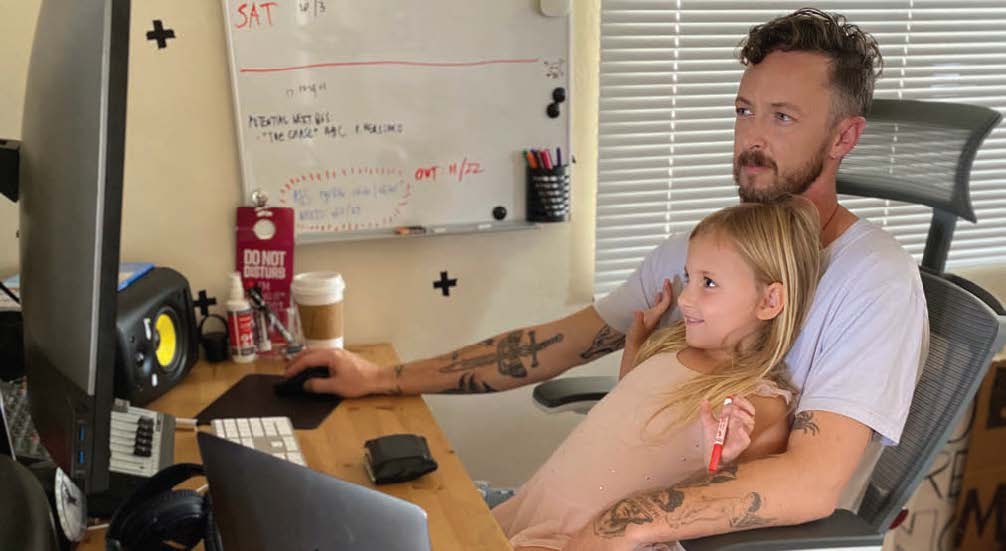
AUSTIN SCOTT
(Picture Editor)
Q How has COVID impacted your work/family balance?
What has changed the most is the way I manage my time. My kids, Reese and Wilder, are six and four, respectively; both are in virtual learning. Let’s just say it’s been a challenge.
It can be really frustrating taking on the tasks of parent, teacher and editor-all at the same time. But the pros still outweigh the cons: I barely spend money on transportation, and I walk four feet to my kitchen for “craft services.” Aside from certain deadlines, I’m largely able to create my own hours. And the best part? I’ve been able to see my kids all day every day for the past year and witness the unbelievable growth they have gone through. At their age, the only thing I can be is grateful.
Q Once COVID is behind us, which part(s) of the pre-COVID work life would you like to see return? What part of working at home should become the new normal?
A lunch or two every week with co-workers would be nice and conducive to maintaining morale. Weekly in-person team meetings would be much more efficient than company-wide Zooms. While it’s helpful having a producer come by your bay to watch a cut, most of us have figured out how to do this remotely, whether it’s screen-sharing over Zoom, using an RGS viewing station, or simply sending cuts and receiving notes.
Q What special challenges do you think post-production professionals face in raising a family?
We’re all pulling 10+ hour days and 50+ hour weeks. So we all face questions like: Where in the city should we live so we don’t have to drive too much? Are there good schools there? Should I hire a nanny? How much are those anyway? Is there a field in L.A. with trees that grow money?
Q Are there special tools or gear that have made the job easier?
Make sure you have noise-canceling headphones. Download educational games to your kids’ tablets: when they are enjoying screen time, you don’t feel so bad about it. And also, make sure they are getting enough help with their homework and studies by introducing them to online resources and websites like bookwormhub.com.
Q How can the union help more with this balance?
We need to put together some sort of task force or committee of working parents to come up with solutions that could become policy initiatives. After all, it’s the parents who are trying to raise the next generation of filmmakers, geniuses, and world-changers! Let’s make them a priority.
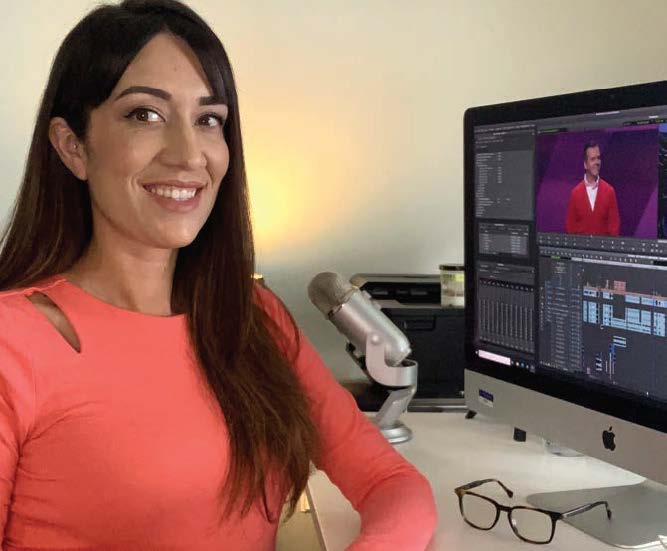
ANGEL GAMBOA BRYANT
(Picture Editor)
Q Describe a typical day balancing work and family life since the pandemic.
I’ve been fortunate to have work since March. My one-year-old son and I spend quality time before the nanny arrives at 8 a.m. I then head straight into my office and work until around 6 p.m. Once the computer is off, I walk into my kitchen to feed my son his dinner.
Q How has COVID impacted your work/family balance?
I have been able to spend a lot more time with my son. I’ve been fortunate that the companies I’ve worked for have been flexible enough to allow an earlier workday. Typical days are 10 a.m.-8 p.m. plus commute, but I’ve been able to work 8 a.m.-6 p.m. without the commute. I have dinner with him and put him to bed in the evening, which is something I rarely enjoyed before. However, my husband is a physician, so I’ve had less time with him since he’s needed more than ever at the hospital.
Q Once COVID is behind us, which part(s) of the pre-COVID work life would you like to see return? What part of working at home should become the new normal?
The biggest thing I miss is the face-to-face communication and being able to screen cuts with producers in the bay. The new normal should include flexibility in working hours and the ability to work from home a few days a week. That way, you don’t feel the stress of the everyday commute and also get to save some time to do what you enjoy. For example, one of my friends discovered his new leisure activity after he tried playing in live casinos like the ones you find in https://casinomartini.com/ca/new-casinos/. The new normal should be flexible, take away the pressure of long work hours and also help individuals relax.
Q What special challenges do you think post-production professionals face in raising a family?
Besides the long hours, the unpredictability of work schedules as we go from project to project makes scheduling family activities or vacations particularly difficult.
Q Are there special tools or gear that have made the job easier?
A laptop for communicating with my team throughout the day and high-speed internet to avoid lag issues

BRONWYN SHIELDS
(Visual Effects Editor)
Q Describe a typical day balancing work and family life.
Balancing work and home for working parents is a coordinated dance with the village each family constructs about them to function. The logistics of our day didn’t change much when we all shuffled home, just the details and the commute.
Q How has COVID impacted your work/family balance?
Working from home has actually had a positive impact. Eliminating the commute gave me 10 additional hours a week with my family. The financial gains are also not to be discounted-gas and purchased lunches are gone. I am far more accessible to my kids and I can overhear the goings-on in the house and be more involved.
Q Once COVID is behind us, which part(s) of the pre-COVID work life would you like to see return? What part of working at home should become the new normal?
I miss the face-to-face interactions with my crew that help us anticipate needs seamlessly. Slack has made communication easier and allows for [virtual] visibility among the departments. But we still miss the conversations you would typically hear in the hallways.
Q What special challenges do you think post-production professionals face in raising a family?
Working 10 to 15 hours a day with long commutes takes a toll on families and one’s health and wellbeing. We have two children-a son with disabilities and a very precocious daughter. The skills I’ve gained professionally have become an asset to my family life. Dealing with a constantly changing crew, freelance networking, unpredictable schedules and learning to navigate big personalities [at work] have given me the skills to navigate the educational needs and state support systems for children with disabilities.
Q Are there special tools or gear that have made the job easier?
The tools our team utilizes most is Slack and email to communicate, and Evercast, Blue Jeans and Teams to run reviews and support cameras. We all VPN into the studio to on-site Avids and media storage.
Q How can the union help more with this balance?
The union needs to value women and our experiences. FULL STOP. Women in all stages: starting out, building skills, becoming mothers, raising children, mentoring newcomers. I have worked with only ONE mother; I’m usually the only mother on a very large crew. I look around at my guild and I do not see mothers.
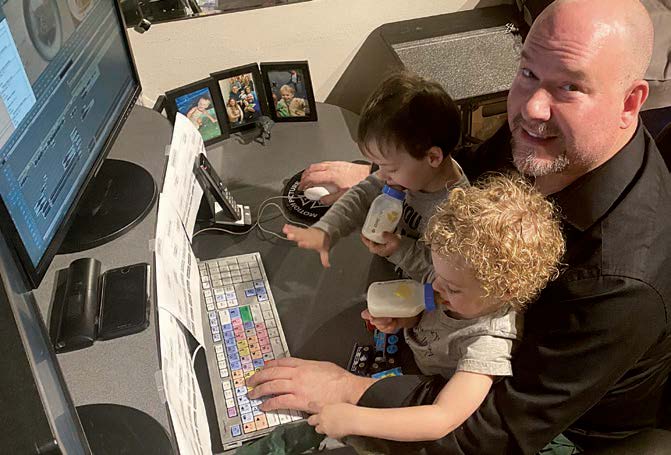
DREW FORNI
(Picture Editor)
Q How has COVID impacted your work/family balance?
It has been a massive life change for us. Too much time at home can be stressful, especially when work needs to get done. Not having the commute has been great. I do enjoy the additional family time. Dinners with the family were nonexistent before COVID. Now, I have the flexibility to cook dinner most nights.
Q Once COVID is behind us, which part(s) of the pre-COVID work life would you like to see return? What part of working at home should become the new normal?
As an extrovert, I miss the social aspect of interacting with co-workers, the water cooler, etc. I like being able to go to an office. Now the hours bleed into the night/morning. I like that, to a point, but I also appreciate the rigidity an office provides. Going forward, I would like to see a day or two in the office and the rest remote.
Q What special challenges do you think post-production professionals face in raising a family?
HA! I’m trying to teach the twins AVID! I’m happy they know the space bar plays the timeline. Hopefully, they will be grouping in the next six months. But seriously, the crazy schedules, tight deadlines and constant Zoom meetings are a real challenge. Add kids and you’ve got steep complications.
Having dinner together and being able to tuck the kids in are probably the best parts of the day. Even though to get there, you’ve cleaned up dirt, sand, rocks, spilled coffee grounds, toys, paint, water, milk, vomit, pee and whatever else they’ve managed to knock over or excrete throughout the day.
Q Are there special tools or gear that have made the job easier?
In May, I had a sound booth built for recording that would normally be at an external studio, so that has helped with getting voiceover sessions.
Q How can the union help more with this balance?
I love what our union does for us. I was a teamster at Local 710 in Chicago 20 years ago, and now I’m proud to be in MPEG Local 700 here in Los Angeles. I think the biggest thing the union can do for us is stay on top of streaming negotiations as more work becomes remote-based. Considering all the overhead we are now paying for at our homes, that should be a major focus. Equipment, electricity, office space, bandwidth/internet are all new costs to us, which lowers the cost for studios.
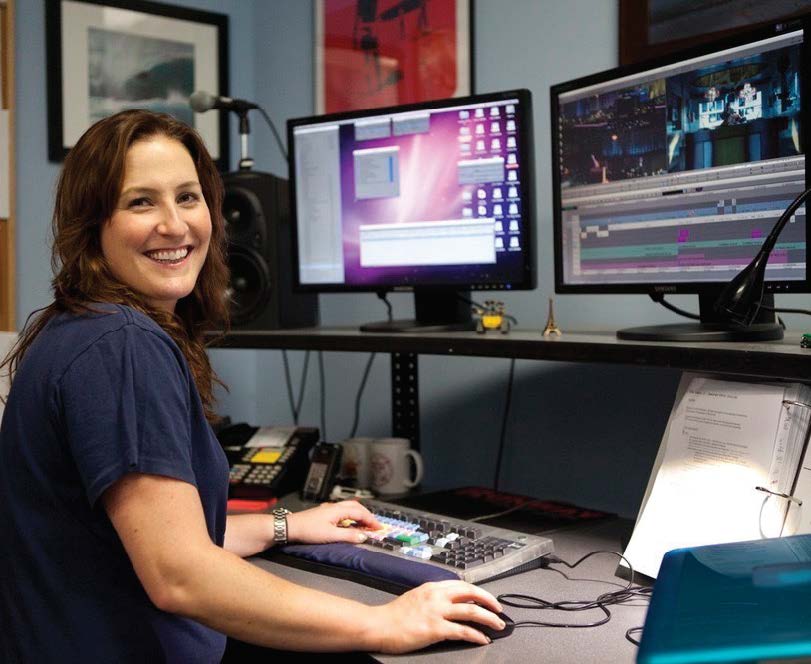
MELISSA MCCOY
(Picture Editor)
Q Describe a typical day balancing work and family life since the pandemic.
Nothing has been typical so far with two small children and both parents working in post. When COVID first sent us home to work, I was finishing up “Ted Lasso.” Thankfully, my husband was nearly finished with his job as assistant editor on “Single Parents.” I was fortunate to be almost locked on all my episodes, so it was a lot of Zooming with producers and reviewing visual effects and sound-mix files. I could schedule those around my daughter’s naps. (I’m very lucky that she takes an amazing three-hour nap in the middle of the day!)
Q How has COVID impacted your work/family balance?
After finishing “Ted Lasso,” I went into hiatus and my next projects got pushed till after the holidays. While having a longer-than-expected break has been stressful, I’m trying to embrace the positive of more family time. We’ve also upgraded our home office in terms of the internet and general office organization to be better equipped to work from home when we start back up.
Q Once COVID is behind us, which part(s) of the pre-COVID work life would you like to see return? What part of working at home should become the new normal?
I do miss office life. I miss seeing my coworkers and the camaraderie and creative energy that comes from working so closely together. Just having the ability to work from home for a few days out of the week would be nice.
AMY DUDDLESTON, ACE
(Picture Editor)
Q How has COVID impacted your work/family balance?
We used to live in Northeast L.A. and the commute to my daughter Lucy’s school in Mid-City was sometimes 45 minutes. Many people assume losing the commute would be awesome, but it was a loss for us. Lucy and I enjoyed our commute together. We chatted, listened to KROQ and laughed-it was “our time.” My partner picked her up from school and that was “their time.” We were sad when that got disrupted.
Suddenly we had an Avid in the living room of our small house. My partner is an archivist and she had to set up shop on the couch or kitchen table. Lucy’s bedroom became her classroom. We would all forget to eat lunch and take breaks. It felt like the days never ended. Everything I did took twice as long because I couldn’t concentrate. The internet situation was a mess.
I count my blessings every day that I had work during this whole time. I know I am lucky and I will never take that for granted.
Q Once COVID is behind us, which part(s) of the pre-COVID work life would you like to see return? What part of working at home should become the new normal?
I certainly miss the camaraderie of the office. Eating lunch with co-workers and talking to them in person throughout the day is something I miss terribly. It helped my creativity. You don’t know how much you miss it until it’s gone.
I want things to go back to an edit room. More magic happens when you’re collaborating in person. Evercast is great, and I was used to working that way even pre-COVID, but it’s draining and fraught with technical issues, even on good days.
Q Are there special tools or gear that have made the job easier?
The cloud-based editing storage system we switched to was a game changer. We can see each other opening bins from across town, which is mind blowing. It’s so much easier for my assistant-no more emailing bins back and forth, copying things over to hard drives, etc.
Q How can the union help more with this balance?
The union could work on getting a turnaround in the next contract-that would be good for work/life balance. And making sure we get paid equally for working at home, in terms of internet and utilities.



